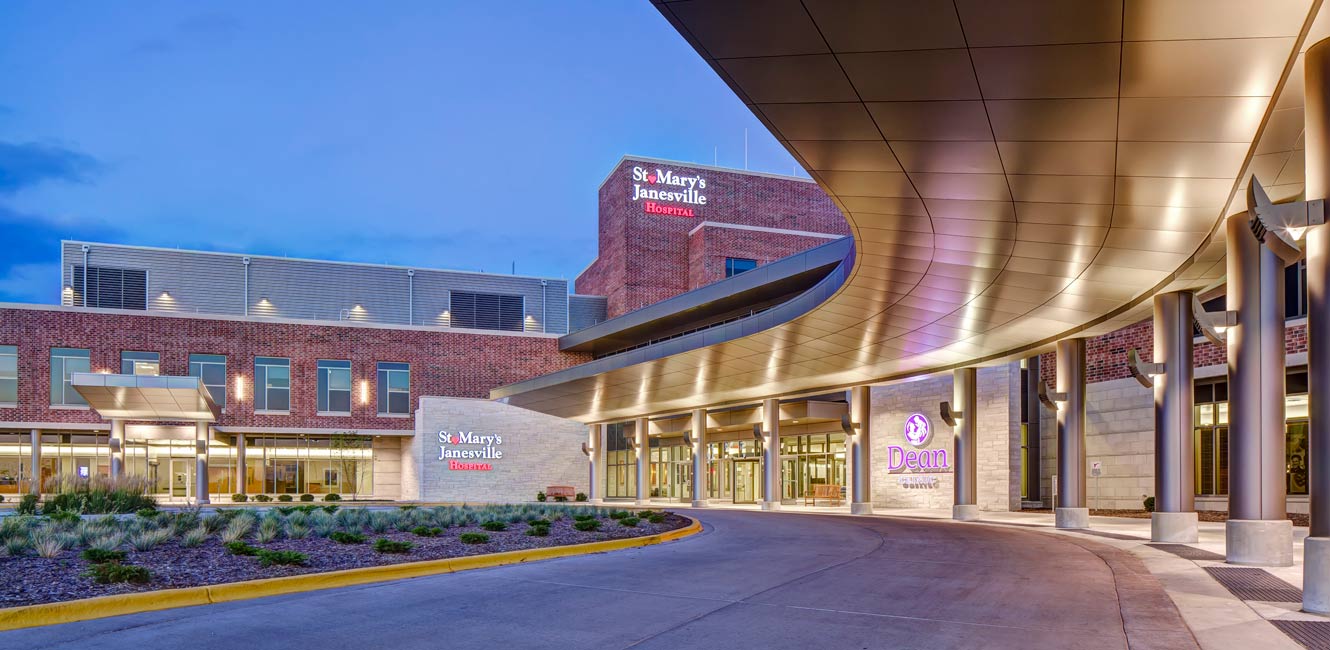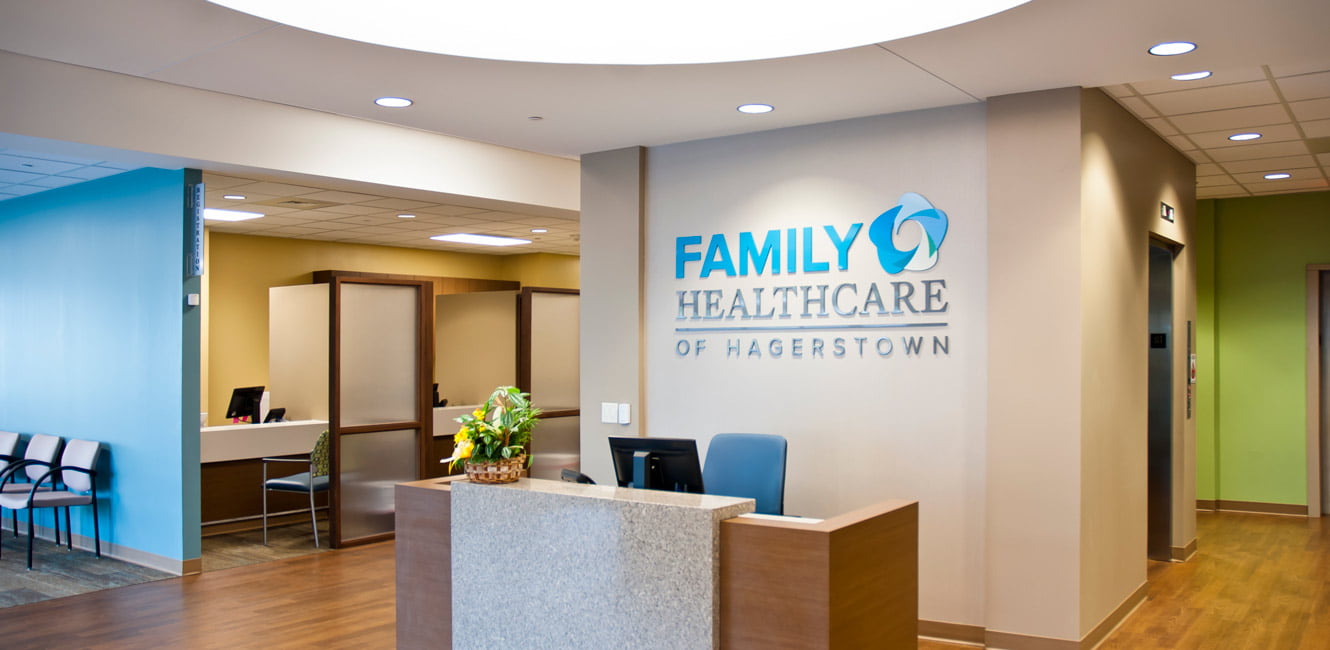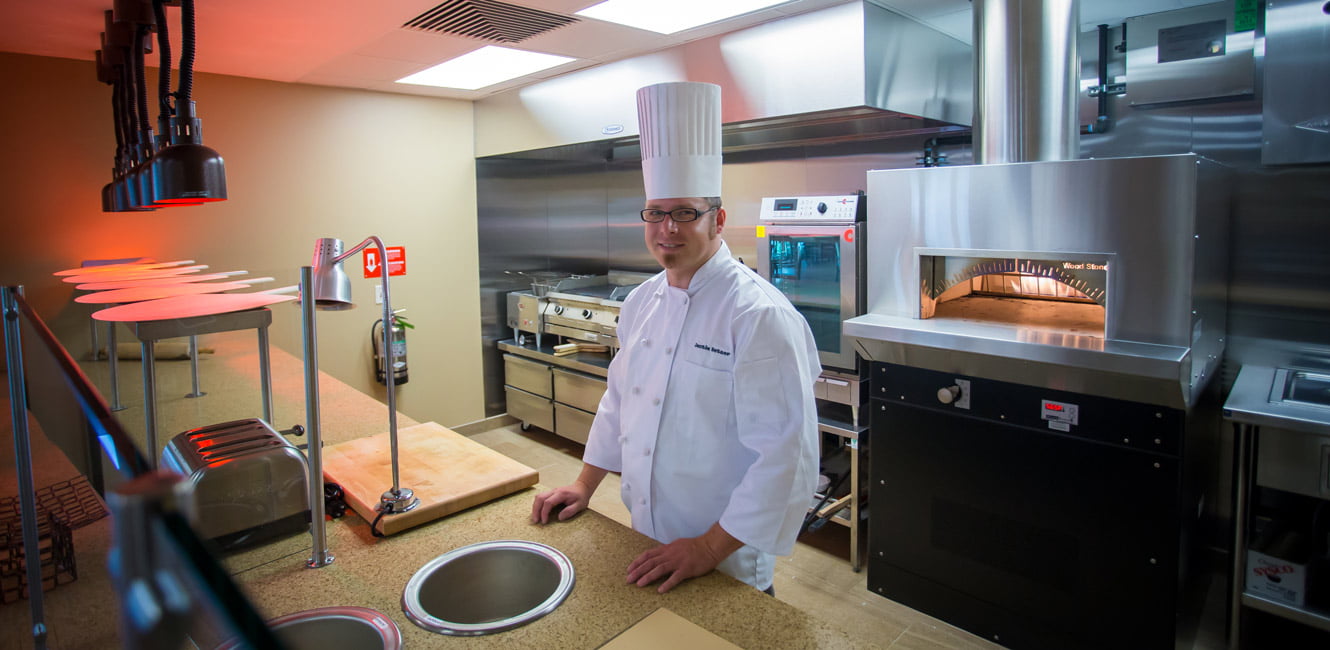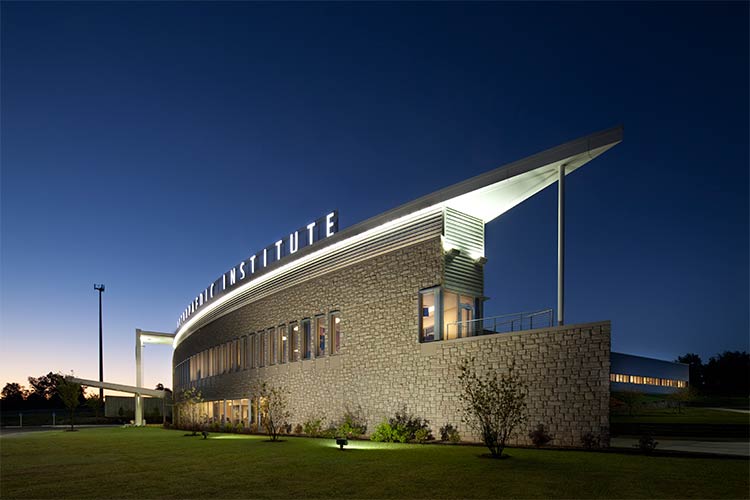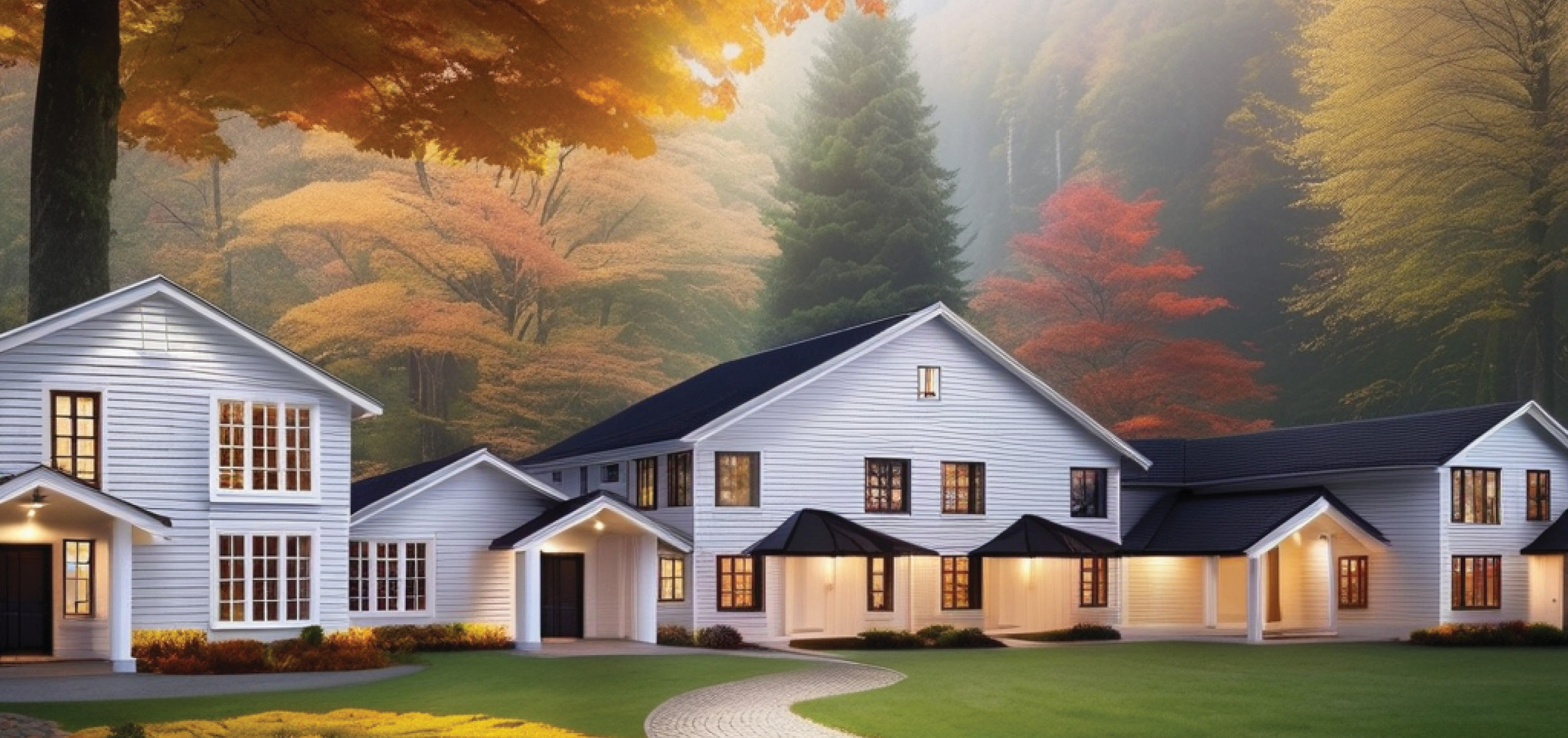Evidence-Based Design Goal
ERDMAN’s goal was to create a warm, inviting, calm and patient-centered environment for patients and staff.
Challenge
The facility planning and construction occurred during a time of acute economic hardship for the community. The closing of a large local automobile assembly plant, in tandem with pressures from the national recession, caused the Janesville metropolitan area to have the highest unemployment rate in the state. With patient and staff satisfaction goals in mind, the project team was challenged to create a facility that met the highest standards for design and quality – while at the same time reflected the local culture, identity, and landscape.
Solution
Critical design decisions throughout the facility were informed by both regional influences and evidence-based research, particularity those that relied on the use of natural elements.
The following strategies worked together to create a place that patients and staff would find welcoming, comfortable, and familiar:
- Artwork: Local artists were commissioned to create pieces to make the space feel warm and familiar to patients, and to serve as a positive distraction. One example is a sculpture that was designed for the Pediatrics department. This tree – made of poured glass and wrought iron – evokes a park environment, is symbolic of growth through the four changing seasons, honors Janesville’s identity as a “Tree City,” and is an effective way-finding landmark.
- Views of nature: Oversized windows are integrated throughout the facility to connect to the natural environment and reduce patient anxiety. Most patient areas and waiting rooms are designed with outdoor views.
- Healing Garden: A healing garden with walking trails, an intimate meditative hollow, a spiritual labyrinth, and a variety of nature landscaping was designed as a critical element of the campus for patient and staff respite. It includes a patio adjacent to the oncology unit, allowing for patient choice and flexibility in their treatment environment.
- Finishes and Materials: The pallet of the interior elements such as paint, decorative wall panel and graphic images, flooring, furniture, and upholstery patterns and textures, was inspired by the local landscape of wheat grass and open farm fields.
- Environmental consciousness: A variety of patient-focused strategies – influenced by the LEED system – were implemented to conserve natural resources, use of low-emitting materials and finishes, and leverage natural daylight.
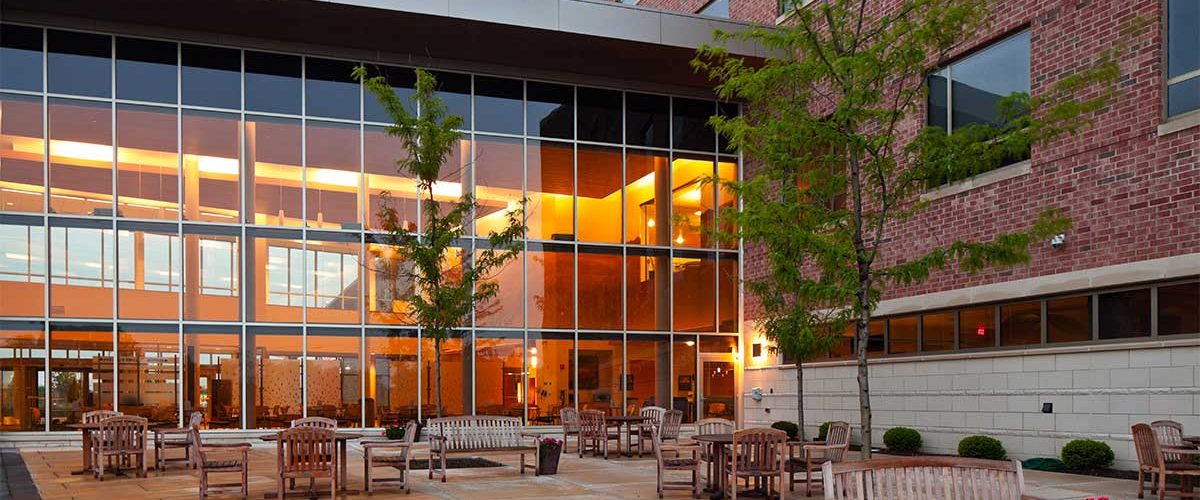
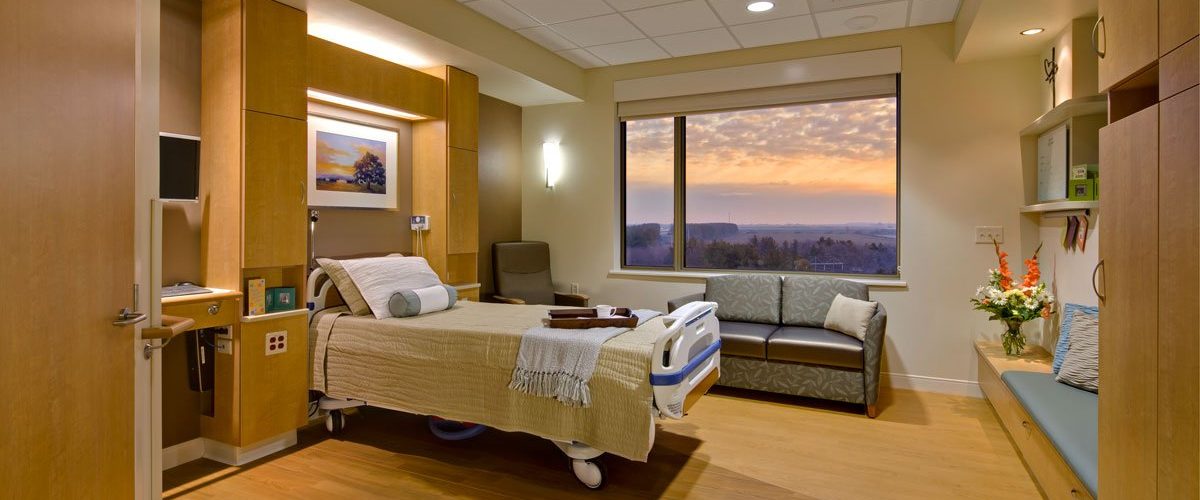
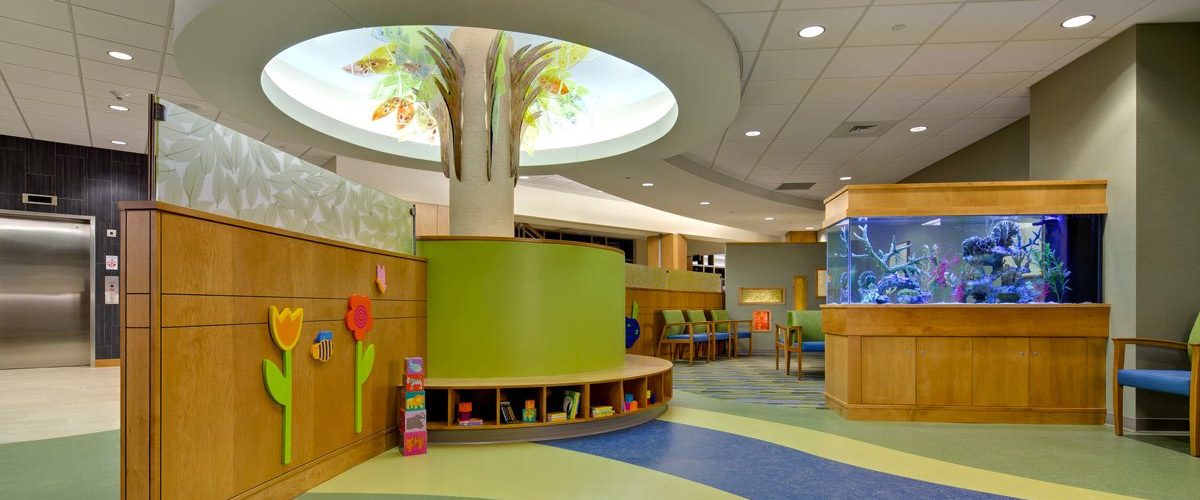
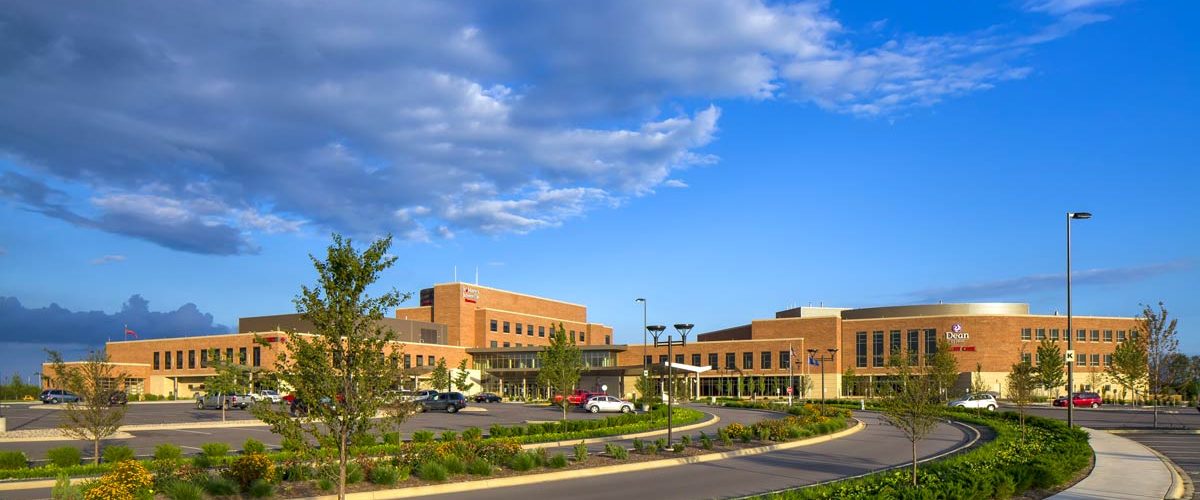
EVIDENCE-BASED
DESIGN STEPS USED
